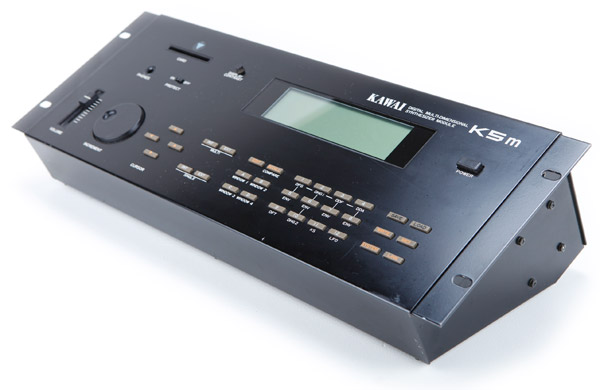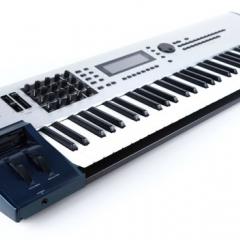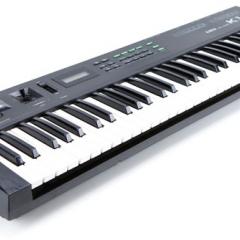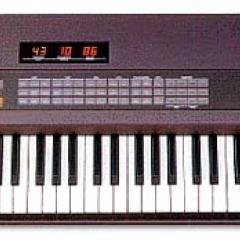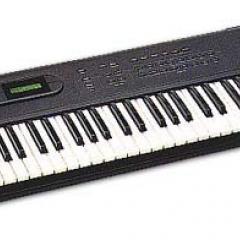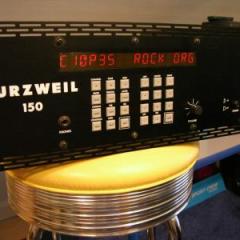Kawai K5m

The K5 is a digital synthesizer that employs additive synthesis harmonic-building as its method of sound creation. Basically, you can vary up to 126 harmonic levels generated by a sine wave via a bar-graph type graphic display to create, shape and change your sound. De-tuning can also be used to thicken or augment sounds too. In addition, each harmonic has an independent choice of four 6-stage envelopes for further tweaking and shaping. The K5 is also 15-part multi-timbral. Sounds can be split, layered, overlapped and de-tuned for creating thicker sounds or ensembles of instruments and sounds. It has 48 internal patches for memory storage as well as a 48 patch external memory card. There are also 48 patches for the multi-mode settings as well.
The K5 is very digital in its synthesis approach and its overall sound quality. However it has some surprisingly analog-like parameters. Its filter is a Dynamic Digital Filter that has familiar slope, cutoff, envelope amount, keyboard tracking and independent 6-stage envelope controls. The Digital Dynamic Amplifier is set up like a 6-stage envelope for overall sound shaping. The LFO has about six waveform shapes, speed, delay and a new Trend setting which is related to the delay parameter of the LFO. But programming Multi-Mode sounds is a bit more modern in its approach to synthesis than analogs and requires a bit of planning and experimenting.
It should be noted that the user interface makes it particularly difficult to program the K5 well. It's especially hard to tell the envelope-to-harmonic routings, and the various bits of nomenclature used by Kawai to indicate what does what can be a bit misleading. Nonetheless, the K5 is a very powerful instrument for creating digital sounds unlike any other. It works great in any MIDI studio or live situation due mostly in part to its multitimbral abilities, unique sounds and its approach to synthesis. It has been used by Jean Michel Jarre.
The K5m rack-module version is basically the same as the K5 except that it has 126 adjustable harmonics and 4 assignable audio outputs and a stereo mix output. If you plan to use the K5 strictly as a sound source in an established MIDI studio, the K5M desktop module version is more compact and practical than the keyboard version. The K5m has been used by Jan Hammer.
Demos & Media
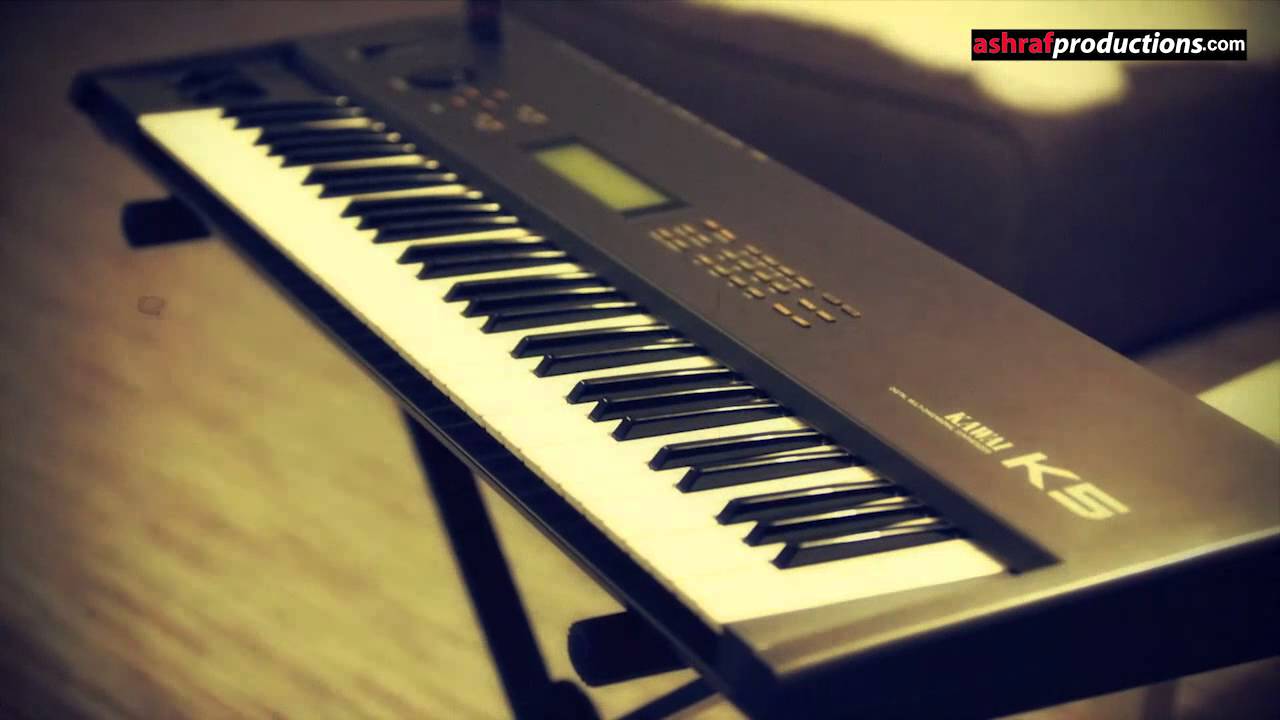
Specifications
Websites of Interest
Resources
Images from Synthony and Perfect Circuit Audio.
Additional information provided by DAC Crowell.
